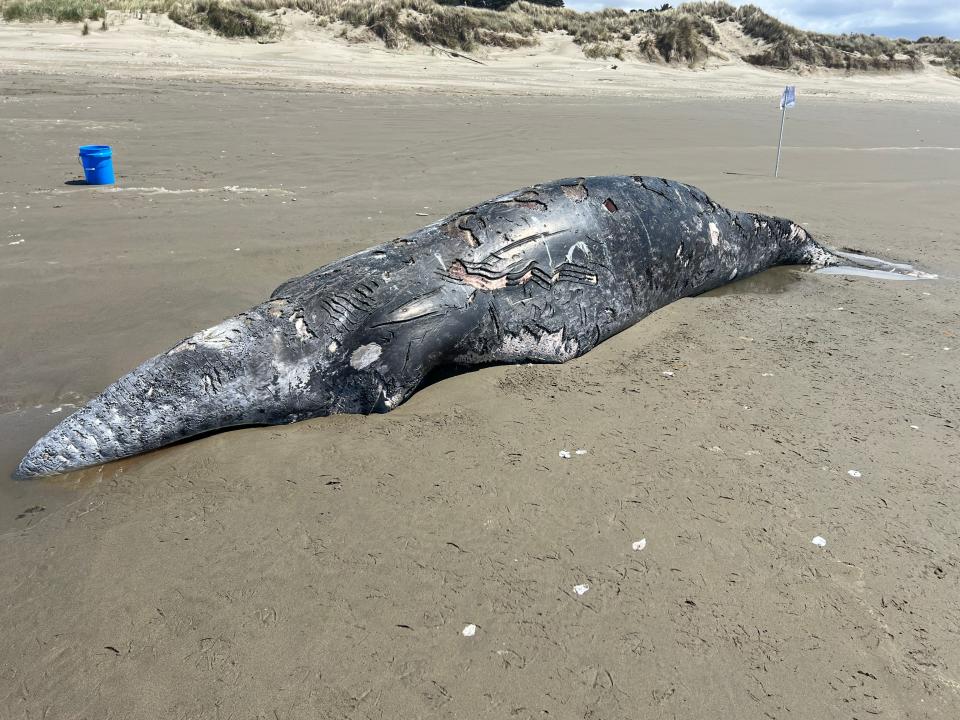'Killer whale predation': Gray whale washes up on Oregon beach covered in tooth marks
A deceased gray whale calf with tooth marks all over its body was found on a beach in Oregon this week.
Jim Rice, a program manager with the Oregon Marine Mammal Stranding Network, told USA TODAY he was notified Tuesday of the 20-foot gray whale calf that washed ashore at Tish-A-Tang Beach in Bandon, Oregon.
Bandon is located in southern Oregon along the Pacific Ocean, about 140 miles southwest of Eugene.
The calf had widespread tooth marks over its body and "major trauma to the lower jaw and the underside of the body," which Rice said indicated that it had recently died of severe injuries caused by "killer whale predation."

What do whales eat? Inside the diet of blue, humpback, sperm and killer whales
What is a gray whale?
Gray whales are large whales, up to 49 feet long and weighing about 90,000 pounds. They have one of the longest migration patterns of any mammal, often traveling 10,000 to 14,000 miles round trip.
According to the National Oceanic and Atmospheric Administration, they earned the nickname "devil fish" because of their aggressive response when harpooned by hunters. They were hunted nearly to extinction, but thanks to commercial whaling moratoriums and conservation efforts, they are now a protected species.
They mainly eat amphipod crustaceans, according to the Alaska Department of Fish and Game, and their only major predators are humans and killer whales.
Where are gray whales found?
Although they were once common throughout the Northern Hemisphere, gray whales are now mainly found in the North Pacific Ocean, according to NOAA.
This article originally appeared on USA TODAY: Dead gray whale on Oregon beach covered in tooth marks; orca blamed

